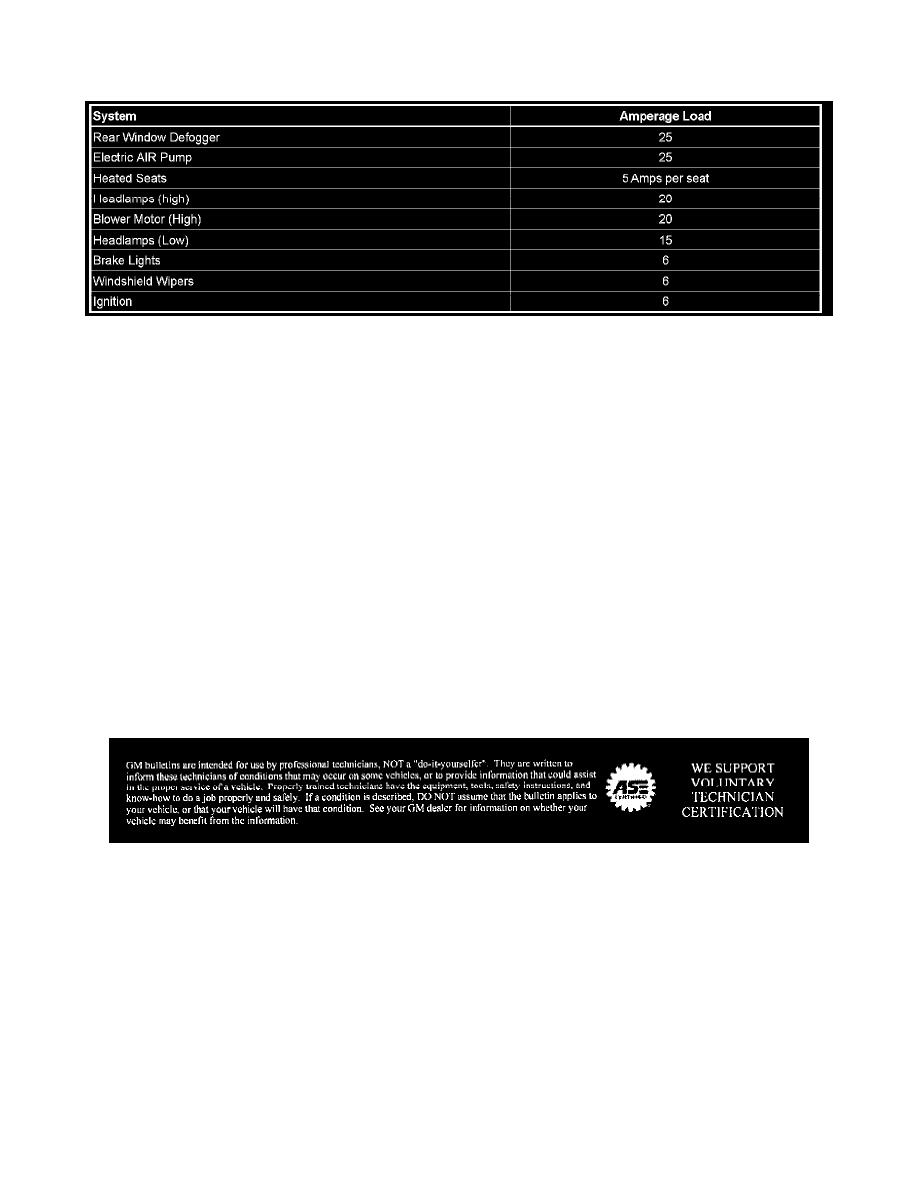Silverado 1500 2WD V8-6.0L Hybrid (2009)

^
Increased internal generator temperatures from extended idling can also contribute to lower electrical system voltage. As the generator's internal
temperature rises, the generator's output capability is reduced due to increased electrical resistance.
Some typical examples of electrical loads are shown above.
Depending on the vehicle application, generator current (amperage) output at engine idle speeds of 600-700 RPM can be as low as 35 percent of the full
rated output. With enough electrical loads "ON", it is easy to exceed the generator current (amperage) output when the engine is at an idle of 600-700
RPM. This is a normal condition. The battery supplements for short periods of time. Items that affect the vehicle's electrical system current and voltage at
idle are the number of electrical loads being used, including add-on accessories, and extended idle times. When the vehicle speed is above approximately
24 km/h (15 mph), the engine/generator RPM is high enough and the generator current (amperage) output is sufficient to supply the current (amperage)
requirements of the vehicle as originally equipped and recharge the battery.
Dimming lights at idle may be considered normal for two reasons:
1.
As the engine/generator speed changes, so will the current (amperage) output of the generator. As a vehicle slows, engine/generator RPM slows
and the current (amperage) output of the generator may not be sufficient to supply the loads, the vehicle system voltage will drop and the lights
will dim. Dimming of the lights is an indication that current is being pulled from the battery. If the battery is in a low state-of-charge (discharged
condition), the driver will notice a more pronounced dimming than a vehicle with a fully charged battery.
2.
When high current loads (blower, rear defogger, headlamps, cooling fan, heated seats, power seats, electric "AIR" pump, or power windows) are
operating or cycled "ON", the generator's voltage regulator can delay the rise in output. This effect, usually at lower engine speeds, can take up to
ten seconds to ramp up the generator output. This is done to avoid loading the engine severely. To increase current (amperage) output, additional
torque is consumed by the generator. The engine computer (ECM/PCM) will ramp up engine/generator speed in small steps so engine speed
variations are not noticeable to the driver.
For diagnosis of the battery and/or the generator, refer to the appropriate Service Information (SI) or Corporate Bulletin Number 05-06-03-002C.
Disclaimer
